Strong Equity Markets Lift Solyco Wealth’s Model Portfolios
 As shown in the following table, the strong start for equity markets for 2024 significantly benefited Solyco Wealth’s four model portfolios and the investors which participate in them. Broadening of the stocks driving upside in March 2024 particularly aided performance as we substantially dialed back our portfolios’ growth exposure late in 2023, favoring an aggressive value tilt. Notably, each of Solyco Wealth’s four model portfolios retain significant cash and fixed income allocations that range from a combined 20% for our Aggressive Model Portfolio to 70% on a combined basis for our Conservative Model Portfolio. Individual stock holdings in 28 to 32 companies, balanced across the 11 S&P sectors, compose all of the equity exposures for our portfolios. Notably, we employ Morningstar Direct to generate all of the returns mentioned for our model portfolios and these figures each represent returns net of our 1% annual investment management fee.
As shown in the following table, the strong start for equity markets for 2024 significantly benefited Solyco Wealth’s four model portfolios and the investors which participate in them. Broadening of the stocks driving upside in March 2024 particularly aided performance as we substantially dialed back our portfolios’ growth exposure late in 2023, favoring an aggressive value tilt. Notably, each of Solyco Wealth’s four model portfolios retain significant cash and fixed income allocations that range from a combined 20% for our Aggressive Model Portfolio to 70% on a combined basis for our Conservative Model Portfolio. Individual stock holdings in 28 to 32 companies, balanced across the 11 S&P sectors, compose all of the equity exposures for our portfolios. Notably, we employ Morningstar Direct to generate all of the returns mentioned for our model portfolios and these figures each represent returns net of our 1% annual investment management fee.
We made valuation-based decisions to rotate out of well-appreciated growthy stocks such as Docusign (DOCU), ASML (ASML), Autodesk (ADSK), in 4Q23, and other momentum-driven names like Advanced Micro Devices (AMD), Applied Materials (AMAT), and CrowdStrike (CRWD), earlier in the year. We replaced these names with companies possessing similar operating profiles but less expensive price-to-earnings ratios, such as Qualcomm (QCOM), Nice (NICE), and NXP Semiconductors (NXPI), only to see the first group’s momentum accelerate while this second group also blew through our price targets. These Technology-levered components of our portfolio holdings more than carried their weight through February 2024. However, the next rotation into later cycle, industrial-levered Technology companies, like Sensata (ST) and ST Microelectronics (STM), has yet to enjoy anywhere near the upside posted by the Magnificent 7 or even the previously mentioned Tech stocks. In fact, these recent portfolio additions exhibit profiles similar to the more traditional “Value” holdings from the Staples, Materials, Utilities, and Healthcare, sectors that we added to our portfolios in 2H23. We continue to believe this rotation to value vs. growth will benefit our investors later in 2024 and in the medium- and long-term as we forecast the breadth of upside participation that commenced in March 2024 will accelerate throughout the rest of the year. However, the graphs below illustrate the near-term, 1Q24 underperformance that resulted from selling our “winners” early.
The table below, which relays Solyco Wealth Model Portfolios’ relative performances versus that of their respective benchmarks, which we detail the composition of in our reviews of each individual portfolio below, offers us confidence that our valuation discipline works over the medium- and long-term. Not only does each of our portfolios remain strongly ahead of its respective benchmark Since Inception, but their 2022, 2023, and Last 12 Months, comparisons also rank favorably.
Aggressive Model Portfolio
The Solyco Wealth Aggressive Model Portfolio, of which we allocate 80% to equity 17% to Fixed Income Exchange Traded Funds (ETFs), and 3% to Cash, returned 5.12% in 1Q24. This return lagged that of the S&P 500 by 540 basis points and its benchmark by 326 basis points. The equity allocation for Aggressive lagged the S&P 500 by 4.32%, or 432 basis points (bps), while the model’s 17% debt allocation trailed the Bloomberg US Aggregate Bond Index by 1.53%. Notably, we made a hard pivot towards longer duration debt exposure in January 2024 in anticipation of the Federal Reserve cutting interest rates that has yet to be rewarded.
The above table reflects a 1% annual management fee, equivalent to 0.25% for 4Q23 and 2.34% since the 9/8/21 inception of Solyco Wealth’s model portfolios.
Actual client investment performance likely will differ from respective model portfolio performance due to several factors including: 1) Timing of securities purchases and sales, 2) Dividend reinvestment choices, 3) Securities held outside the model portfolio, 4) Weighting differentials for certain securities relating to whole versus partial share accounting, 5) Timing and pricing of rebalancing actions, and other minor factors.
Aggregate benchmark = total returns for 45% Russell 3000 Index, 5.0% Bloomberg US Aggregate Bond Index, 45% MSCI World ex-US Index, and 5.0% cash allocations.
Since its September 8, 2021, inception, returns for our Aggressive Model Portfolio remain well ahead of both its benchmark (+1,291 bps) as well as those of the S&P 500 (+464 bps). In order to achieve diversified investment exposure, we employ a balanced investment process, allocating capital to each of the 11 S&P sectors since mid-2023, with an average position size of 2.9% for the portfolio’s individual equity holdings. Equity market dominance over the past 12 months by the Magnificent 7, which resulted in significant concentration, significantly handicapped short-term return potential for our investment philosophy. Decidedly, we expect this phenomenon to dissipate in the near future, much to the benefit of Aggressive’s value-oriented holdings and, as a result, its relative performance metrics.
Three stocks largely explain Aggressive’s 1Q24 relative underperformance:
- YETI Holdings (YETI), manufacturer of drinkware and coolers: -25.6% in 1Q24,
- BioNTech (BNTX), developer of the Comirnaty COVID-19 vaccine, -12.6% in 1Q24, and
- DLocal (DLO), digital payments leader in Latin America and Africa, -8.8% in 1Q24.
In our judgment YETI and DLO fell victim to short-term sales and earnings expectations that belie the long-term potential for each company. While YETI dropped from $48 per share to $41 per share February 15th in response to reporting disappointing 2023 holiday sales, DLO similarly fell from $18 to $15 after reporting fiscal 1Q24 revenue that “only” rose 55% year-over-year. Shares of BNTX, which retains approximately 90% of its market cap in cash, suffer from the typical, biotech time-lag between clinical trial commencements and results; the company has 10 Phase 2 and 3 candidates in trials. Our valuations continue to illustrate that each of these companies offers significant upside.
In 1Q24 three stocks in the Aggressive Model Portfolio appreciated over 20%. Chart Industries (GTLS), which carries a double-weight, 5.91% allocation, moved 20.8% last quarter. While GTLS shares incurred some significant intra-quarter volatility related to a ban on liquefied natural gas (LNG) export facility approvals, realization that the company possesses a substantial backlog unrelated to this action along with a robust ongoing order book brought buyers back to the market. The aforementioned NICE, which is similar to a middle-market focused Salesforce (CRM) in that it provides Customer Relationship Management software and related services, moved 24.8% higher before we decided to sell it last quarter. Exhibiting the opportunity for stocks from the value universe to post substantial short-term price appreciation, seed and crop chemical provider Corteva (CTVA) from the Materials sector, moved 20.7% higher in 1Q24.
Moderately Aggressive Model Portfolio
The Moderately Aggressive Model Portfolio generated a 5.31% return net of our annualized 1% management fee in 1Q24, 302 bps short of its benchmark’s rate of return and 521 bps lower than the S&P 500’s 1Q24 return. Similar to the Aggressive Model Portfolio, ModAgg retained its long-term relative outperformance vs. benchmark (+1,383 bps) and the S&P 500 (+139 bps) since its 9/8/21 inception.
The above table reflects a 1% annual management fee, equivalent to 0.25% for 4Q23 and 2.34% since the 9/8/21 inception of Solyco Wealth’s model portfolios.
Actual client investment performance likely will differ from respective model portfolio performance due to several factors including: 1) Timing of securities purchases and sales, 2) Dividend reinvestment choices, 3) Securities held outside the model portfolio, 4) Weighting differentials for certain securities relating to whole versus partial share accounting, 5) Timing and pricing of rebalancing actions, and other minor factors.
Moderately Aggressive benchmark = total returns for 32.5% Russell 3000 Index, 25.0% Bloomberg US Aggregate Bond Index, and 32.5% MSCI World ex-US Index, and 10.0% cash allocations.
As with the Aggressive Model Portfolio, shares of CTVA, GTLS, and NICE, also led upside realization for the Moderately Aggressive Model Portfolio. However, ModAgg and its investors had another holding appreciate in excess of 20% in 1Q24: property and casualty insurer Travelers (TRV), likely benefiting from both a “hard market” for insurance premiums and escalating returns from its investment portfolios, moved up 21.4% last quarter.
Joining BNTX in detracting from ModAgg’s upside in 1Q24 were shares of sportswear behemoth Nike (NKE), which lost 13.1% of their value to start the year, and fellow biotech player Incyte (INCY), which generates the bulk of its revenue and earnings from blood cancer treatment Jakafi. We judge NKE’s problem relates to Chinese consumer weakness in combination with finicky US consumers. Time likely solves the first challenge while product innovation and marketing should remedy NKE’s opinion among domestic footwear and sportswear consumers. Impending applications for INCY’s dermatology drug Opzelura and ongoing clinical trials in the oncology space should rectify the stocks’ medium-term underperformance.
Moderate Model Portfolio
As one would anticipate in a weak fixed income market, as the magnitude of debt exposure for a portfolio increases its absolute performance declines. This relationship certainly held true in 1Q245 for the Moderate Model Portfolio, which allocates over one-half of its capital to debt securities and cash, as it posted only a 2.5% total return net of fees last quarter. This 2,5% return lagged the equity-only S&P 500 by 801 bps and Moderate’s benchmark by 331 bps. As shown in the table below, however, Moderate remains solidly ahead of its benchmark since inception as its equity allocation outperformed the S&P 500 by 938 bps while its fixed income holdings surpassed the Bloomberg US Aggregate Bond Index return by 317 bps over this time period.
The above table reflects a 1% annual management fee, equivalent to 0.25% for 4Q23 and 2.34% since the 9/8/21 inception of Solyco Wealth’s model portfolios.
Actual client investment performance likely will differ from respective model portfolio performance due to several factors including: 1) Timing of securities purchases and sales, 2) Dividend reinvestment choices, 3) Securities held outside the model portfolio, 4) Weighting differentials for certain securities relating to whole versus partial share accounting, 5) Timing and pricing of rebalancing actions, and other minor factors.
Moderate benchmark = total returns for 22.5% Russell 3000 Index, 45.0% Bloomberg US Aggregate Bond Index, and 22.5% MSCI World ex-US Index, and 10.0% cash allocations.
Along with shares of CTVA and TRV that also benefited our ModAgg Model Portfolio as discussed above, private debt provider Hercules Capital (HTGC, +11.6%) and e-commerce and cloud services leader Amazon.com AMZN, +17.3%) led positive returns for Moderate. With domestic economic strength, which decidedly aids returns from its equity holdings, leading to push-outs for rate-cut expectations, only two fixed income ETFs held in Moderate composing representing about a 20% allocation, posted positive returns. Characterizing lower interest rates, which should benefit existing bond holdings, as a “when” and not an “if” concern, we expect this 55% allocation to reap dividends for investors in our Moderate Model Portfolio.
Recently added automotive sensor and industrial microcontroller semiconductor provider, ST Microelectronics (STM), which promptly greeted addition to our model portfolios with a 7.6% dip in its share price, joined NKE and BNTX in providing headwinds for Moderate’s 1Q24 performance. As we expect the recent strength in US industrial production likely to persist through the balance of 2024, we expect better results from STM shares going forward.
Conservative Model Portfolio
Our Conservative Model PortfWith its 30% equity allocation doing all of the heavy lifting in 1Q24, the Conservative Model Portfolio posted a net-of-fees return of 2.4% last quarter. Over the past 12 months this debt-heavy portfolio generated a 12.6% return, 54 bps better than its benchmark. We remain especially proud of Conservative’s 382 bps of outperformance over the past 12 month vis-à-vis the 0.55% return of the benchmark Bloomberg US Aggregate Bond Index. Since inception our Conservative Model Portfolio, which returned 7.26% for that period through 1Q24, bettered its benchmark by 650 bps.
The above table reflects a 1% annual management fee, equivalent to 0.25% for 4Q23 and 2.34% since the 9/8/21 inception of Solyco Wealth’s model portfolios.
Actual client investment performance likely will differ from respective model portfolio performance due to several factors including: 1) Timing of securities purchases and sales, 2) Dividend reinvestment choices, 3) Securities held outside the model portfolio, 4) Weighting differentials for certain securities relating to whole versus partial share accounting, 5) Timing and pricing of rebalancing actions, and other minor factors.
Conservative benchmark = total returns for 10.0% Russell 3000 Index, 65.0% Bloomberg US Aggregate Bond Index, and 10.0% MSCI World ex-US Index and 15.0% cash allocations.
The Conservative Model Portfolio encompassed out-sized 1Q24 return contributions not only from previously mentioned CTVA, NICE, TRV, HTGC, TRV, and AMZN, but mega-bank JPMorgan Chase (JPM, +18.5%) and semiconductor equipment company ASML (ASML, +16.6%). Notably, the Vanguard Short-Term Corporate Bond ETF (VCSH) generated a positive contribution for the quarter, albeit small, as it moved up 0.54%.
The positive contribution from Conservative’s 15% weighting in VCSH served to offset a large portion of the negative return (-1.38%) from similarly weighted iShares 20+ Year Treasury Bond ETF (TLT). Also posting headwinds for Conservative last quarter were holdings in NKE, STM, and Chinese e-commerce leader Alibaba (BABA, -6.6%).
 Solyco Wealth early in 2024 continued to pivot its model portfolio holdings and thus, client investments, toward assets that will benefit from falling inflation and declining interest rates amidst moderating domestic economic growth. With an intense valuation focus defining our investment process, for much of 2023 holdings in client portfolios reflected a contrarian viewpoint, which substantially carried over to 2024. As frequently happens when we find ourselves in positions juxtaposed with market actions, we asked, “Are we wrong?” With a wealth of economic and earnings data already produced thus far this year, we conclude that “we’re not wrong; we’re just not right, yet.” Trying to get closer to “right” faster, we recently made the following adjustments to the sector weightings that inform our individual equity selections as compared to those of the benchmark S&P 500:
Solyco Wealth early in 2024 continued to pivot its model portfolio holdings and thus, client investments, toward assets that will benefit from falling inflation and declining interest rates amidst moderating domestic economic growth. With an intense valuation focus defining our investment process, for much of 2023 holdings in client portfolios reflected a contrarian viewpoint, which substantially carried over to 2024. As frequently happens when we find ourselves in positions juxtaposed with market actions, we asked, “Are we wrong?” With a wealth of economic and earnings data already produced thus far this year, we conclude that “we’re not wrong; we’re just not right, yet.” Trying to get closer to “right” faster, we recently made the following adjustments to the sector weightings that inform our individual equity selections as compared to those of the benchmark S&P 500:
 Significant price appreciation for risk assets through 4Q23 solidly benefited Solyco Wealth’s four model portfolios as well as its investors. The four models averaged a 6.88% return for 4Q23, contributing to an average full-year 2023 total return of 17.87% for the portfolios, each of which holds a mix of individual stocks and debt Exchange Traded Funds (ETFs). As shown in the following table and as one would expect, the Solyco Wealth Aggressive Model Portfolio led the way with an 8.05% 4Q23 positive return and a 27.63% full-year 2023 total return. All four of the model portfolios also posted positive total returns since their September 8, 2021, inception despite the predominantly negative performances for risk assets in 2022. Notably, the Aggressive model accomplished these returns with 15% of its assets allocated to fixed income ETFs and 5% dedicated to cash. Also of note, we present all of our model portfolio performance statistics, which we generated using Morningstar Direct, net of the 1% management fee we charge clients.
Significant price appreciation for risk assets through 4Q23 solidly benefited Solyco Wealth’s four model portfolios as well as its investors. The four models averaged a 6.88% return for 4Q23, contributing to an average full-year 2023 total return of 17.87% for the portfolios, each of which holds a mix of individual stocks and debt Exchange Traded Funds (ETFs). As shown in the following table and as one would expect, the Solyco Wealth Aggressive Model Portfolio led the way with an 8.05% 4Q23 positive return and a 27.63% full-year 2023 total return. All four of the model portfolios also posted positive total returns since their September 8, 2021, inception despite the predominantly negative performances for risk assets in 2022. Notably, the Aggressive model accomplished these returns with 15% of its assets allocated to fixed income ETFs and 5% dedicated to cash. Also of note, we present all of our model portfolio performance statistics, which we generated using Morningstar Direct, net of the 1% management fee we charge clients.
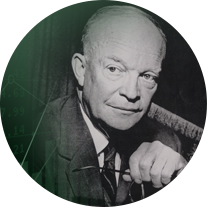 We borrowed an adage from Dwight D. Eisenhower to explain the financial planning and investment philosophies we expected to pursue when we launched Solyco Wealth:
We borrowed an adage from Dwight D. Eisenhower to explain the financial planning and investment philosophies we expected to pursue when we launched Solyco Wealth: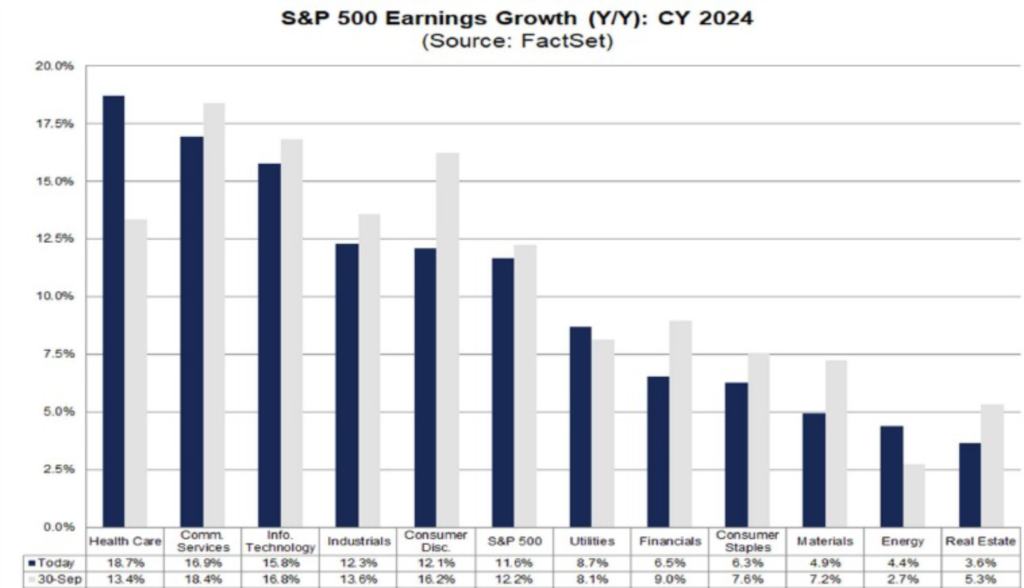
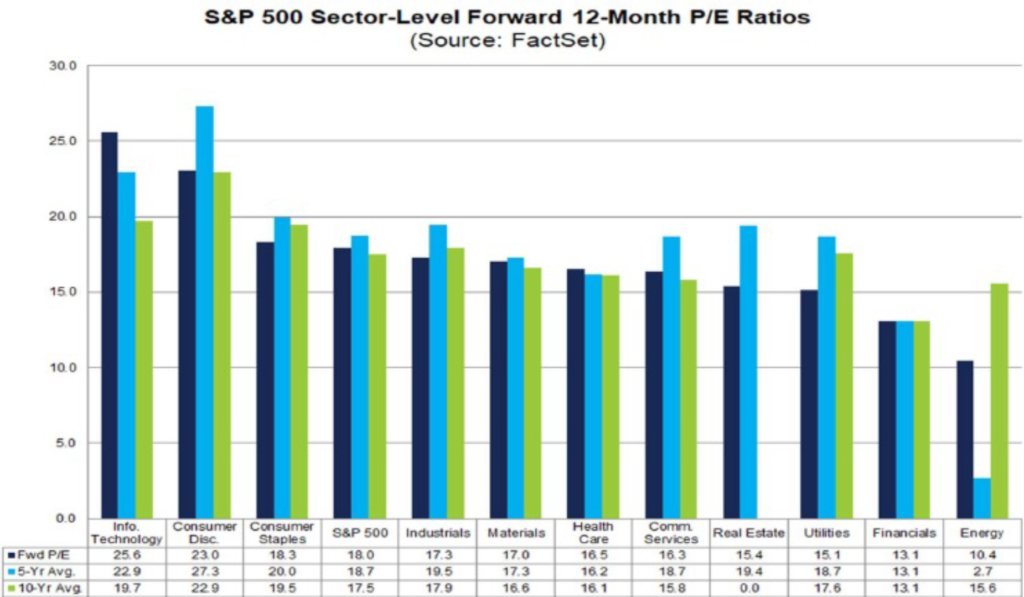
 Positive impact from 3Q23 mergers and acquisitions activities significantly affected Solyco Wealth’s Aggressive Model Portfolio. Permian Resources (PR) bid for portfolio holding Earthstone Energy (ESTE) resulted in a 35.1% uplift over the quarter, while Cisco Systems’ offer for co-holding Splunk (SPLK) saw its shares move 38.2% higher in 3Q23. Notably, Aggressive held a double-weight, 6% position in ESTE shares as compared to the typical 3% weighting for individual equity positions in the portfolio. These positive forces propelled the Aggressive Model Portfolio 2.5% higher for the quarter and 18.8% thus far in 2023, after fees, leading to respective outperformances of 5.9% and 8.5% vs. the S&P 500’s 3.2% loss for 3Q23 and 10.0% gain thus far in 2023.
Positive impact from 3Q23 mergers and acquisitions activities significantly affected Solyco Wealth’s Aggressive Model Portfolio. Permian Resources (PR) bid for portfolio holding Earthstone Energy (ESTE) resulted in a 35.1% uplift over the quarter, while Cisco Systems’ offer for co-holding Splunk (SPLK) saw its shares move 38.2% higher in 3Q23. Notably, Aggressive held a double-weight, 6% position in ESTE shares as compared to the typical 3% weighting for individual equity positions in the portfolio. These positive forces propelled the Aggressive Model Portfolio 2.5% higher for the quarter and 18.8% thus far in 2023, after fees, leading to respective outperformances of 5.9% and 8.5% vs. the S&P 500’s 3.2% loss for 3Q23 and 10.0% gain thus far in 2023. It’s no secret to active investors that the 10 largest US stocks dominated market returns in 1H23. The following chart provided by AllianceBernstein with data assists from FactSet and Standard & Poor’s, details exactly to what degree these 10 companies drove the S&P 500’s 16.9% 1H23 total return. Notably, six of the 10 are Tech stocks while Amazon and Tesla fall into Consumer Discretionary and Alphabet and Meta reside in the Communication Services sector. Outperformance in 4Q23 and in 2024 probably will require investors to add some breadth to their holdings beyond these companies and sectors, possibly well beyond them.
It’s no secret to active investors that the 10 largest US stocks dominated market returns in 1H23. The following chart provided by AllianceBernstein with data assists from FactSet and Standard & Poor’s, details exactly to what degree these 10 companies drove the S&P 500’s 16.9% 1H23 total return. Notably, six of the 10 are Tech stocks while Amazon and Tesla fall into Consumer Discretionary and Alphabet and Meta reside in the Communication Services sector. Outperformance in 4Q23 and in 2024 probably will require investors to add some breadth to their holdings beyond these companies and sectors, possibly well beyond them.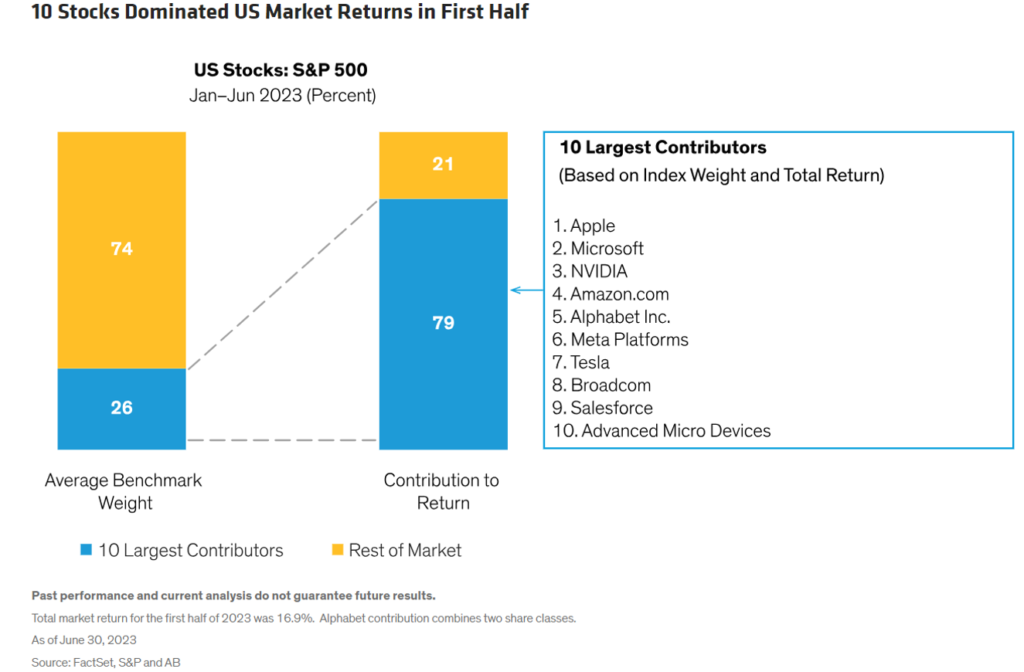
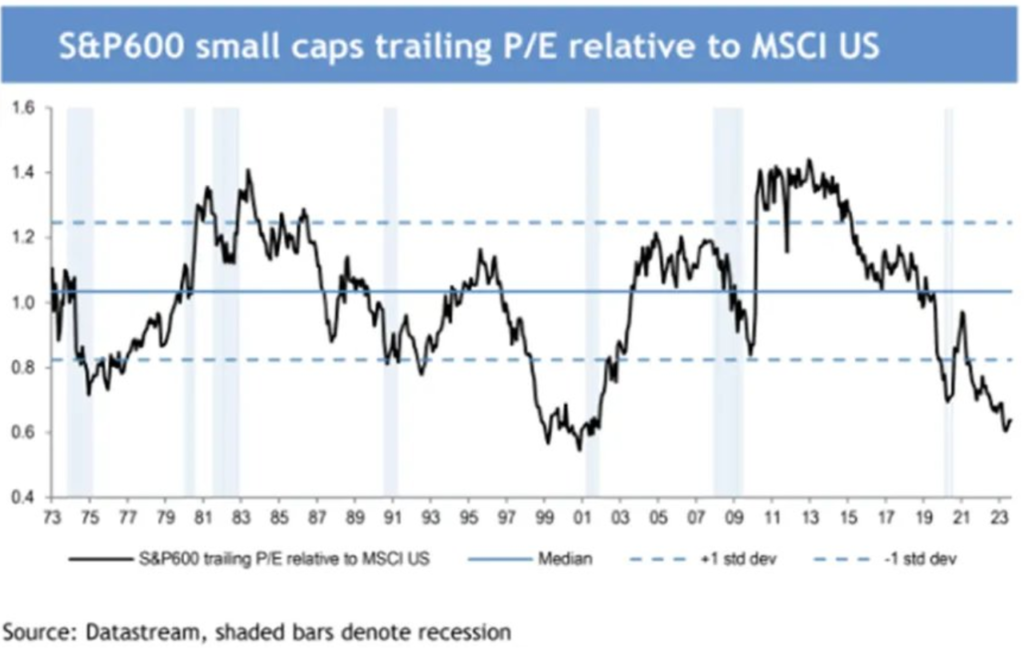
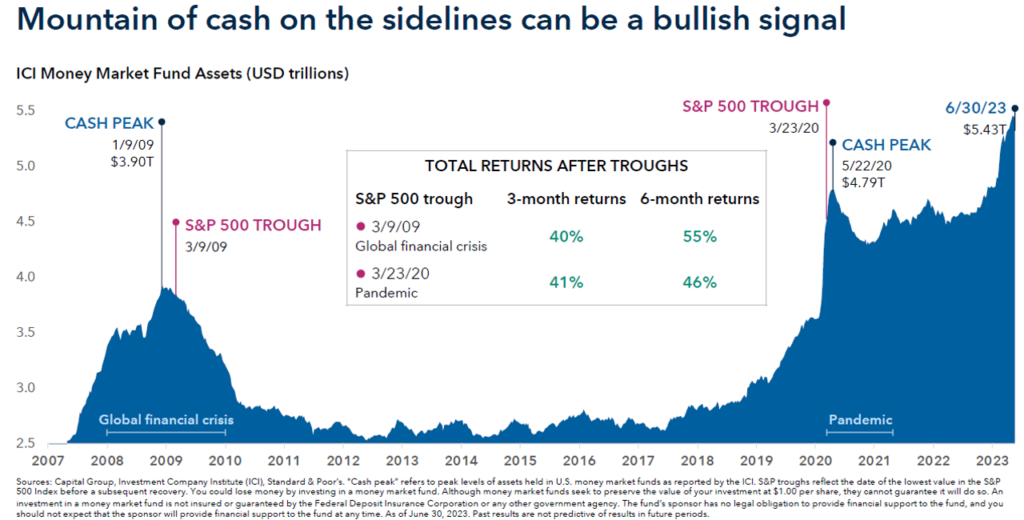
 Exiting 2Q23 earnings season Solyco Wealth commenced pivoted client portfolios to take advantage of higher bond yields with less susceptibility to equity volatility and credit risk. While it increasingly appears that the US will forego a recession in 2023 – the Atlanta Fed’s recent GDPNow estimate pointed to 5.8% 3Q23 GDP growth! (see below) – we harbor no expectation that equity markets will reward such lofty economic performance. Rather, we anticipate that any incremental economic strength will be met, at least, with hawkish Fed rhetoric and, more likely, future increases in the Fed Fund Rate. With real yields of 2%+ now available with little duration risk, we choose to increase by a combined 10% short-term Treasury and corporate debt exposure while reducing stock ownership by 10% for our three more aggressive model portfolios.
Exiting 2Q23 earnings season Solyco Wealth commenced pivoted client portfolios to take advantage of higher bond yields with less susceptibility to equity volatility and credit risk. While it increasingly appears that the US will forego a recession in 2023 – the Atlanta Fed’s recent GDPNow estimate pointed to 5.8% 3Q23 GDP growth! (see below) – we harbor no expectation that equity markets will reward such lofty economic performance. Rather, we anticipate that any incremental economic strength will be met, at least, with hawkish Fed rhetoric and, more likely, future increases in the Fed Fund Rate. With real yields of 2%+ now available with little duration risk, we choose to increase by a combined 10% short-term Treasury and corporate debt exposure while reducing stock ownership by 10% for our three more aggressive model portfolios.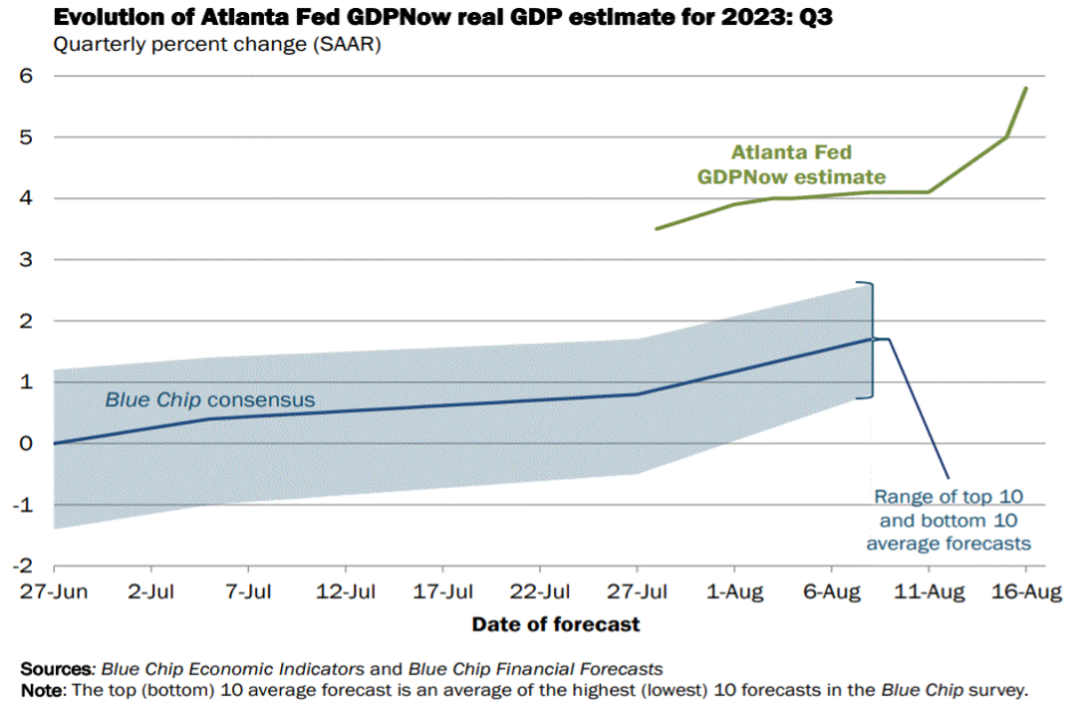
 Benefiting from rising equity values in 2Q23, Solyco Wealth’s four Model Portfolios posted an average return for the past quarter of +4.78%, ranging from +3.14% for the Conservative Model Portfolio to +6.68% for the Aggressive Model Portfolio. Alas, as each of our four portfolios not only retained fixed income and cash allocations but also substantially diversified equity holdings across the eleven S&P sectors, each of the Model Portfolios failed to keep pace with the S&P 500’s blistering 8.70% 2Q23 return.
Benefiting from rising equity values in 2Q23, Solyco Wealth’s four Model Portfolios posted an average return for the past quarter of +4.78%, ranging from +3.14% for the Conservative Model Portfolio to +6.68% for the Aggressive Model Portfolio. Alas, as each of our four portfolios not only retained fixed income and cash allocations but also substantially diversified equity holdings across the eleven S&P sectors, each of the Model Portfolios failed to keep pace with the S&P 500’s blistering 8.70% 2Q23 return. The stratospheric rise of the stock price for graphics chipset pioneer NVIDIA (NVDA) and other artificial intelligence (AI) participants invokes more than a few thoughts of asset-price bubbles. As Wharton Professor Jeremy Siegel recently noted in commentary on the subject, “momentum can carry stocks far higher than their fundamental value, and no one can predict how high they might go.” We argue that price appreciation far above a company’s fundamental value hardly warrants being labeled a “bubble.” Appreciation of 160% in less than six months, however, warrants heightened scrutiny.
The stratospheric rise of the stock price for graphics chipset pioneer NVIDIA (NVDA) and other artificial intelligence (AI) participants invokes more than a few thoughts of asset-price bubbles. As Wharton Professor Jeremy Siegel recently noted in commentary on the subject, “momentum can carry stocks far higher than their fundamental value, and no one can predict how high they might go.” We argue that price appreciation far above a company’s fundamental value hardly warrants being labeled a “bubble.” Appreciation of 160% in less than six months, however, warrants heightened scrutiny.  Outside of the shockingly fast failures of Silicon Valley and Signature Banks, the strength with which the Technology and Communication Services sectors finished 1Q23 undoubtedly defines the biggest surprise for equity markets for the first three months of the year. Led by a meteoric 81.9% rise from Meta (aka Facebook) to start the year, the Communication Services Select Sector SPDR (XLC) exchange traded fund (ETF) moved 23.1% higher for 2023 through April 17th. Similarly, NVIDIA’s (NVDA) artificial intelligence chip-driven investor fury led to an 84.8% rise in its shares and a 19.8% appreciation for the Vanguard Information Technology (VGT) ETF.
Outside of the shockingly fast failures of Silicon Valley and Signature Banks, the strength with which the Technology and Communication Services sectors finished 1Q23 undoubtedly defines the biggest surprise for equity markets for the first three months of the year. Led by a meteoric 81.9% rise from Meta (aka Facebook) to start the year, the Communication Services Select Sector SPDR (XLC) exchange traded fund (ETF) moved 23.1% higher for 2023 through April 17th. Similarly, NVIDIA’s (NVDA) artificial intelligence chip-driven investor fury led to an 84.8% rise in its shares and a 19.8% appreciation for the Vanguard Information Technology (VGT) ETF. 